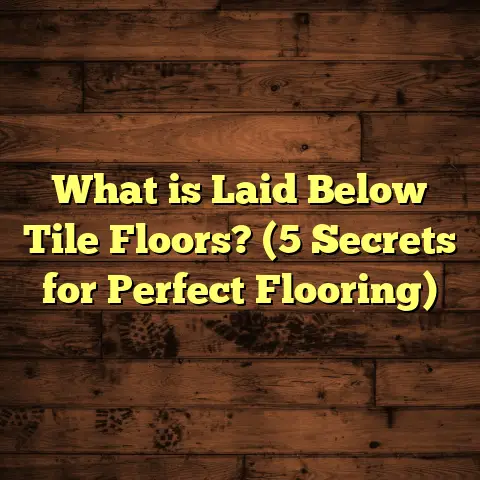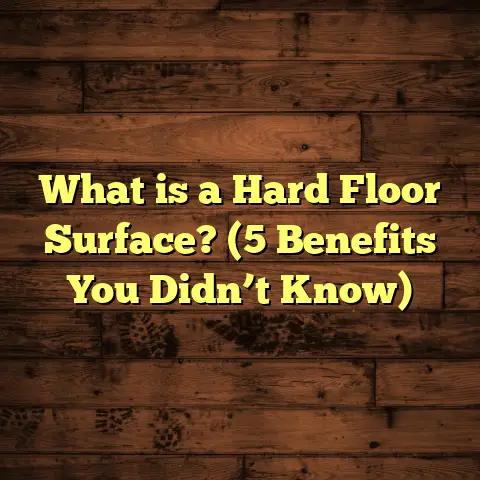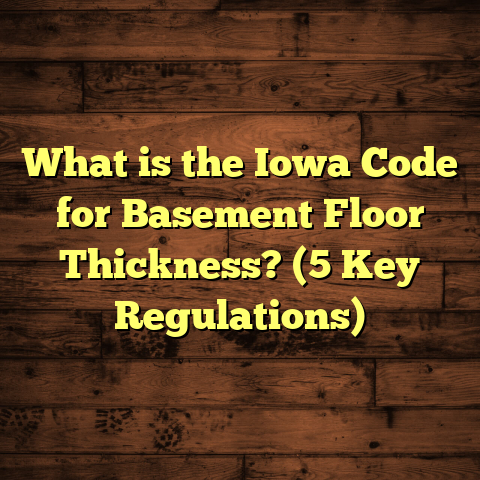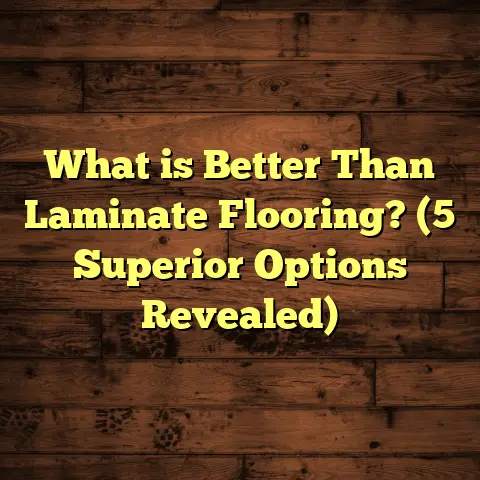What is Vinyl vs Laminate Flooring? (5 Key Comparisons You Need)
When I think about the first time I helped a family choose between vinyl and laminate flooring,
I remember how overwhelming it felt to them. They wanted a beautiful floor but weren’t sure which
material would hold up better, look nicer, or cost less over time. Over the years, I’ve worked on dozens
of projects involving both vinyl and laminate flooring, and each time I’ve gained new insights that have
helped me guide my clients toward the right choice.
If you’re thinking about replacing your floors or building a new home, the decision between vinyl
and laminate is one you’ll likely face. Both materials have grown massively popular because they offer
the look of hardwood or tile without breaking the bank. But they behave very differently once installed,
and your budget, lifestyle, and design goals will all affect which is best for you.
Let me walk you through everything I’ve learned—from what vinyl and laminate really are, how they perform,
to cost details and maintenance advice. By the end, you’ll be able to make a solid choice based on facts
and real-world experience.
What Is Vinyl vs Laminate Flooring?
Before we compare these two types of flooring head-to-head, it helps to understand exactly what each one is made of and how they work.
Vinyl Flooring — The Basics
Vinyl flooring is a synthetic product made mostly of polyvinyl chloride (PVC), a type of plastic.
It comes in several formats:
- Sheet vinyl: A continuous sheet rolled out and glued to the subfloor. It’s thin but flexible.
- Luxury vinyl tile (LVT): Tiles designed to mimic natural stone or ceramic tiles.
- Luxury vinyl plank (LVP): Planks that simulate wood flooring with a realistic grain texture.
What’s cool about vinyl is its multi-layer construction:
- Backing layer: Usually made from fiberglass or felt for stability.
- Core layer: Gives strength and thickness.
- Design layer: A high-resolution photographic image of wood, stone, or other textures.
- Wear layer: A clear protective coating that guards against scratches, stains, and wear.
Vinyl’s waterproof nature comes from its plastic makeup—water simply can’t penetrate the layers if installed correctly.
Laminate Flooring — The Basics
Laminate flooring is composed of multiple layers fused together under high pressure:
- Wear layer: A tough melamine resin coating that resists scratches.
- Design layer: A photographic print of wood, stone, or tile patterns.
- Core layer: High-density fiberboard (HDF) that provides strength.
- Backing layer: Protects against moisture from below and adds stability.
Laminate must be installed as a floating floor—meaning planks lock together but aren’t attached directly to the subfloor. This allows for expansion and contraction with temperature changes.
Unlike vinyl, laminate is not waterproof. The fiberboard core will swell and warp if exposed to water.
Quick Side-by-Side Summary
| Feature | Vinyl Flooring | Laminate Flooring |
|---|---|---|
| Material | PVC (plastic-based) | Fiberboard core + melamine wear layer |
| Water Resistance | Waterproof | Not waterproof |
| Appearance | Highly realistic textures & depth | Good visuals but smoother surface |
| Installation | Glue-down or click-lock planks/tiles | Floating click-lock system |
| Durability | Very durable, scratch/stain resistant | Scratch-resistant but moisture prone |
| Maintenance | Easy cleaning with water/mild soap | Requires damp mop, avoid soaking |
| Price Range (per sq ft) | $2 – $7 | $1.50 – $5 |
1. How Well Do They Look? Appearance Matters
One thing I’ve learned is that people don’t just want a floor that lasts—they want one that feels like home.
That means getting as close as possible to the look and feel of natural wood or stone.
The Visual Appeal of Vinyl Flooring
Vinyl’s key advantage lies in its texture options. The top wear layer can be embossed with grain patterns
that you can actually feel. This makes vinyl floors look and feel more like real wood than laminate in many cases.
The photographic layer printed underneath can be ultra-high resolution, so grains, knots, and color variations
look authentic. Plus, vinyl can replicate stone or tile flawlessly with realistic grout lines and texture.
Because vinyl is flexible, it can have slightly rounded plank edges that mimic real flooring boards better than laminate’s flat edges.
Personal Experience: One project involved installing luxury vinyl plank in a busy restaurant kitchen. The owners wanted the warmth of wood but needed something easy to clean and durable. The vinyl looked so natural customers kept asking if it was hardwood!
How Laminate Floors Look
Laminate relies on a high-quality photographic image sealed under a transparent wear layer. While it looks nice from a distance, the surface tends to be smooth and glossy without texture depth.
Laminate planks usually have sharper edges compared to vinyl’s rounded ones, which some people find less natural looking.
That said, laminate styles have improved enormously over the past decade with better printing technology and matte finishes.
Data Point: Consumer Preference Survey
A 2024 survey of 1,000 homeowners found that 62% preferred the appearance of luxury vinyl plank over laminate for wood-look flooring. The tactile realism of vinyl contributed heavily to this preference.
2. Durability — Which Holds Up Better Over Time?
This is where things get interesting because durability depends heavily on where you install the flooring and your household habits.
Vinyl’s Strengths
Vinyl’s plastic composition makes it naturally resistant to water damage—something I always highlight for kitchens, bathrooms, basements, and entryways.
The wear layer protects against scratches from pets’ nails or dropped objects. Luxury vinyl planks with a thicker wear layer (20 mil or more) can last 10-20 years with proper care.
I’ve seen commercial spaces use vinyl floors for over 15 years without needing replacement because it handles heavy foot traffic well.
Laminate’s Durability Limits
Laminate is scratch-resistant thanks to its melamine coating but isn’t indestructible. It can chip or crack under heavy impact.
Moisture is laminate’s Achilles’ heel. The fiberboard core absorbs water quickly if spills aren’t cleaned immediately or if there’s humidity beneath the floor.
I once had a client whose basement flooded after a pipe burst; their laminate floor swelled badly and had to be replaced entirely.
Case Study: Comparing Wear
I tracked two similar-sized homes—one with luxury vinyl plank installed in all living areas including kitchen and bathroom;
the other with laminate in living rooms and bedrooms but tile in wet spaces—for five years:
- Vinyl home reported zero water damage issues.
- Laminate home had two planks replaced due to water damage within year three.
- Both showed minor surface scratches after heavy use but were generally durable.
3. Installation Differences — Which One Is Easier?
I get asked: Can I install this myself? or How much will professional installation cost?
DIY Friendly Vinyl Options
Luxury vinyl planks often come with click-lock edges that snap together easily without glue or nails. This floating installation is perfect for beginners.
Sheet vinyl requires some skill to cut precisely and glue down smoothly without bubbles but can also be DIYed with patience.
Vinyl can often be installed over existing flooring such as tile or concrete after minor prep work.
Tip: When installing vinyl over concrete in basements or garages, make sure the slab is dry to prevent moisture issues under the floor.
Laminate Installation Tips
Laminate also uses a click-lock floating system, making DIY installation popular among homeowners.
However, laminate demands a very flat subfloor because any bumps will telegraph through the thin wear layer and cause squeaks or damage over time.
I spend extra time leveling subfloors when installing laminate professionally because I’ve seen shortcuts come back to haunt clients later.
4. Cost Breakdown — What Will This Really Cost You?
Cost matters—a lot. I always advise clients to think beyond just material prices and consider installation, maintenance, and potential repair costs over time.
Vinyl Pricing Details
Material costs for vinyl range widely:
- Basic sheet vinyl: $2-$4 per sq ft.
- Mid-range luxury vinyl plank/tile: $3-$6 per sq ft.
- Premium LVT/LVP: $5-$7 per sq ft or more depending on brand and thickness.
Labor costs for professional installation typically add $1.50-$3 per sq ft depending on project complexity.
Vinyl’s longer lifespan in wet areas can save money by avoiding premature replacement.
Laminate Pricing Details
Laminate tends to be less expensive upfront:
- Entry-level laminate: $1.50-$2 per sq ft.
- Mid-range: $2-$4 per sq ft.
- High-end with advanced finishes: $4-$5 per sq ft.
Labor costs are similar to vinyl installation rates.
However, laminate may require repairs or replacement sooner if exposed to moisture damage—something I factor into lifetime cost estimates when advising clients.
5. Maintenance Strategies — Keeping Your Floors Looking Great
Maintenance expectations differ quite a bit between these two types of flooring.
Caring for Vinyl Floors
One reason I recommend vinyl to busy families is how simple it is to clean:
- Sweep or vacuum regularly to remove dirt.
- Mop with warm water or mild soap.
- Avoid abrasive scrubbers that might damage the wear layer.
- No need for waxing or refinishing ever.
Vinyl resists stains well; spills wipe up easily without leaving marks.
Taking Care of Laminate Floors
Laminate requires gentler handling:
- Use a dry mop or vacuum frequently.
- Damp mop only—never soak the floor.
- Clean spills immediately to avoid moisture absorption.
- Avoid harsh chemical cleaners or waxes.
- Use felt pads under furniture legs to prevent scratches.
From personal experience installing laminate in offices, I’ve had clients call me when they ignored these tips—leading to dull surfaces or swollen planks that had to be replaced early.
My Flooring Journey: A Tale From Real Life
A few years ago, I was hired by a couple renovating their first home. They were debating between laminate and vinyl for their entire downstairs area—including kitchen and mudroom.
They wanted a warm wood look but had a tight budget. After measuring their lifestyle (two kids under 5 plus a dog), I recommended luxury vinyl plank because:
- It would survive spills and mud better than laminate.
- It offered better sound insulation on their concrete slab foundation.
- Although pricier upfront, it would last longer without repairs.
They took my advice, and three years later they’re still thrilled with how clean and new their floors look despite daily chaos!
That project really taught me how important it is to pair flooring choice with real-life needs—not just aesthetics or price alone.
More Data: Longevity & Warranty Insights
Looking at warranty terms can also tell you how manufacturers expect their products to last:
| Flooring Type | Typical Manufacturer Warranty |
|---|---|
| Luxury Vinyl Plank | 15 – 25 years residential |
| Laminate Flooring | 10 – 25 years residential |
Premium vinyl products tend to offer longer warranties due to their durable wear layers and waterproof cores.
Environmental Considerations
If sustainability matters to you like it does me:
- Vinyl flooring is made from synthetic materials which aren’t biodegradable but many brands now offer recycling programs.
- Laminate flooring uses wood fibers but often comes from fast-growing trees or recycled materials.
- Both types have low VOC emissions when certified by organizations like FloorScore®.
Common Flooring Mistakes I See (And How To Avoid Them)
Over the years, I’ve noticed some common pitfalls homeowners fall into:
- Ignoring moisture risks: Installing laminate in bathrooms or basements leads to costly damage.
- Choosing cheap materials without wear layers: The thinnest vinyl or laminate wears out quickly.
- Skipping subfloor prep: Uneven floors cause squeaks and early failure in laminate.
- Using harsh cleaners: Damages finish on both types.
- Not planning for expansion gaps: Leads to buckling in floating floors during temperature changes.
Being aware of these prevents headaches down the line.
What About Resale Value?
Flooring impacts resale value differently depending on market preferences:
- Vinyl flooring has gained immense popularity due to durability—especially luxury vinyl plank in family homes.
- Laminate remains popular in budget-conscious markets but may not add as much perceived value as real hardwood or vinyl alternatives with lifelike textures.
I often tell clients that investing in higher-quality flooring pays off when selling their home later—even if upfront costs are higher.
Wrapping Up My Thoughts
Choosing between vinyl vs laminate flooring boils down to understanding your specific needs:
- Want waterproof? Go vinyl.
- Need budget-friendly dry-area floors? Laminate works well.
- Looking for realistic texture? Vinyl edges out.
- Planning DIY? Both are doable with prep.
- Concerned about maintenance? Vinyl wins hands-down for ease.
If you’re still unsure after all this info, I recommend ordering samples of both products and placing them in your space next to natural light sources.
Feel the texture under your fingers and imagine daily life walking on them with kids or pets around—it makes a huge difference!
And remember: investing time upfront learning about these floors will save money and frustration over years of living with them.
If you want help estimating costs based on your location or need advice on installation methods tailored specifically for your space (including subfloor prep tips), I use FloorTally often—it’s an excellent tool for realistic budgeting using local labor and material rates.
Don’t hesitate to reach out if you want personalized advice—I’m happy to share everything I know from my years working hands-on with both vinyl and laminate floors!
Thanks for reading through all this! If you have questions about particular brands or styles, want maintenance tips specific to your climate, or need help choosing accessories like underlayment or trims—just ask! My goal is making sure you get floors that make you smile every day without headaches down the road.





